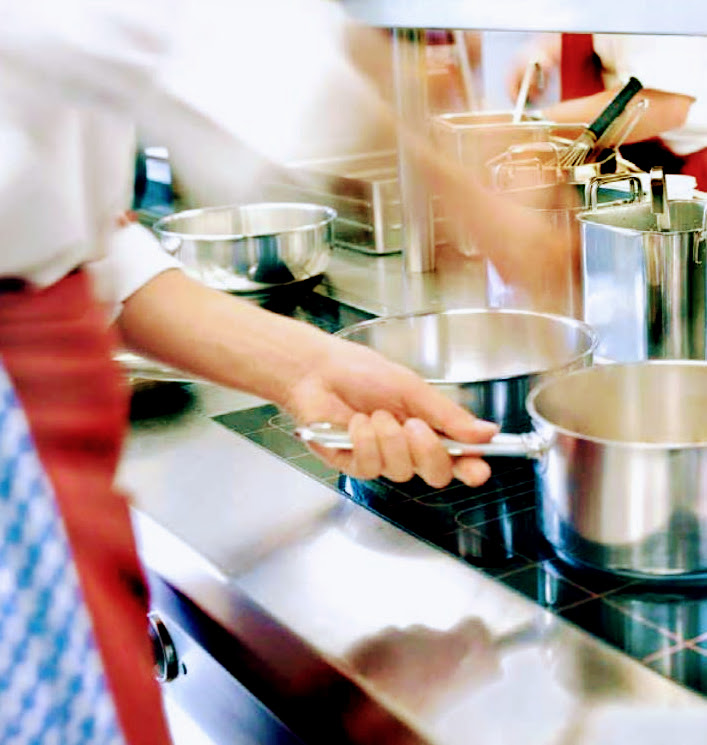Taking the Mystery Out of Induction
Nov 19th 2019
Simply explained, the foundation of induction cooktop is that a magnetic field is used to generate heat energy in ferrous metal pots and pans. It is faster than other modes of cooking. Electromagnetic energy is transferred directly into the metal of the cook-pot. The pot becomes the heating element. With an induction cooking method, 80 to 90% of its electromagnetic energy is distributed to the food product in the pan. In comparison, gas cooking converts only 38 percent of its energy. So, induction heat transfer is faster than gas.

And it is safer, too. With induction cooking, there is no open flame as found with a gas powered unit. There is not the red-hot heating element that you would have with an electric range. This feature makes it impossible for clothes or flammable items to set on fire. It is less likely for staff members using induction to get equipment burns. Induction units are actually cool to human touch.
So, you are thinking - what’s the glitch in this set-up? Can the user rely on getting foods to the desired cooking temperature? Induction cooking does not compromise the ability for the chef to achieve accurate temperatures. Actually, induction cooking will get you the desired temp quicker and keep it accurately where you want it to be. Induction cooking is quite energy efficient. Estimates are that induction is 85 to 90% efficient. There is no heat loss because energy is passed directly to the cookware. With gas the rating is closer to 50%, electric cooktops at 60%. Added bonus: Your kitchen stays cooler. That heat is not escaping and heating up your workspace, or the people working them. Less ventilation is needed within your cooking footprint resulting in energy savings (and less strain on the ventilation systems itself).
Cleaning is a breeze, simply wipe up any spills off the flat surface. And you can do that right away, as there are no heated surfaces that you have to wait to cool down. The surface is not hot at all.
Induction does have this restriction: Not just any pan will work on an induction cooktop. Since it depends on electromagnetic energy, glass, cooper and aluminum will not work. Many pots and pans are made specifically for induction cooking. If your stainless steel cookware is not marked “induction ready”, you can check if it contains enough ferrous metal by testing it with a common refrigerator magnet. If it securely sticks to the bottom, it will be fine to use for induction cooking. Oh, and the bottom needs to be flat to work on an induction cooktop. Contact with the pan to unit is a must. Cast iron works excellent on induction.
See for yourself: Check out this short video:
https://www.garland-group.com/Products/Induction/D...
Interested to find out more? Whether you seek info on the module line shown above, countertop units or rethermalizers, give Globe a call today and explore how induction can fit into your commercial kitchen. The benefits of induction are huge: Precision temps, efficiency, speed and energy savings.
About Garland:
A Welbilt Brand: Garland designs, manufactures and markets a full line of commercial ranges, ovens, griddles, grills and commercial counter top cooking equipment. As cooking equipment innovators, Garland has shown how innovation can lead to radical improvements that save operators time and money. The latest Garland cooking equipment meets the demand for Accelerated Cooking in smaller convenient dining establishments with larger menus
